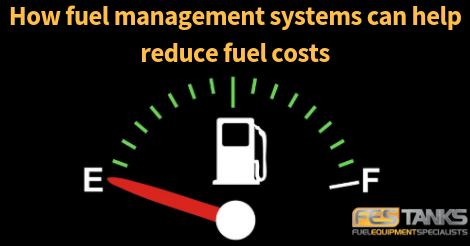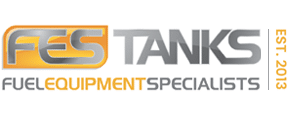It’s no surprise to transport operators that fuel prices continue to rise, and the fuel cycle is increasingly unpredictable.
Taking control of your fuel buy with on-site fuel storage tanks that improve efficiency by minimising downtime and giving you greater control over your spend is an increasingly popular strategy.

Adding a fuel management system to the mix is helping smart operators maximise those benefits with the added bonus of boosting fleet and fuel security, tracking vehicle and driver performance, identifying potential issues early, and simplifying reporting to make the most of government rebates.
What is a fuel management system?
Usually, a system will include a combination of hardware and software. This means in addition to supporting the nuts and bolts of fuel delivery, like actuating ball valves to allow authorised deliveries, enabling uploading pumps and providing real-time tank level measurement and overfill prevention, the system can track fluid moves, identify inwards transactions and capture manifest details.
Systems can also monitor fuel levels in underground and above ground tanks, automatically detect leaks and send low level alarms and re-order alarms direct to your phone or email.
Some of the components of a system can include:
Cloud-based Fuel Management System: Case in point is the SmartFill GEN 2, which claims to be the world’s most advanced fuel management system and can record fuel use for up to 2000 vehicles, recording the past 5000 fuel issues in memory. It can restrict fuel usage by time or volume per vehicle/driver, and data is recorded instantly online. The web-based system is continuously monitored remotely and suits almost all bowsers and bulk flow meters. It offers flexible, real-time reporting and no ongoing user or licence fees.
GPS fleet tracking: Better fleet visibility allows operators to have real-time data on vehicle location, and combines with fuel dispensing and vehicle data to create a clear picture of fuel usage patterns and help address issues early and optimise efficiency.
Automatic tank gauging systems: These use probes and sensors to remotely provide real-time data on fuel levels in underground or above ground tanks, and can also detect leaks early to minimise fuel loss and environmental impacts.
Authorised fuel dispensing: Vehicle identification and authorised fuel dispensing systems can be linked to fleet or mining machinery for faster and more secure refuelling. They include options like vehicle tags or fuel inlet rings and nozzle readers that use RFID technology to authorise fuel transactions and upload data to the fuel authorisation system. Systems can also connect to a vehicle’s on-board computer for full reporting of odometer, engine hours, fuel consumption, driver behaviours and diagnostic errors.
Tanks and transfer systems: Your fuel storage and transfer systems are at the heart of your fuel management system. Your integrated fuel management system includes your tanks, flow meters and fuel transfer pumps. It’s worth considering the F.E.S. TANKS range of self-bunded tanks, which come in a variety of sizes to suit all needs, are fully compliant to Australian Standards and hold 10 per cent more fuel than like-capacity tanks – with the added benefit of being fully transportable.
How do Fuel Management Systems help reduce fuel costs?
If you’ve got a fleet of vehicles you’ll be spending at least one third of your operational costs on fuel. Using a fuel management system can significantly reduce costs across the fuel chain by:
- Reducing idling time: Every second spend idling translates to increased fuel costs. A truck idling an average of three hours a day can add the equivalent of more than 43,000km in engine wear and tear in a year, and that can add up to thousands of dollars in maintenance costs. Using a fuel management system with GPS tracking not only helps with vehicle and load security, but means you can track idle time per vehicle and fleet-wide idle time averages, monitor performance and educate drivers.
- Decreasing downtime and maintenance costs: GPS vehicle tracking solutions can also allow you to track individual vehicle fuel usage. This means you can take action early on any issues and implement effective maintenance schedules that save you on costly downtime.
- Improving fuel security: If your vehicles refuel off-site, using a fuel management system with GPS tracking will help you reduce the risk of fuel theft by reconciling expenditures with fuel consumption.
- Maximising productivity: Companies that use fleet management solutions can reduce total mileage by 5-10 per cent thanks to up-to-date information on vehicle locations and variables like traffic and weather, area topography and vehicle clusters.
- Improving site safety: If you’ve got the advantage of on-site fuel storage, an effective Fuel Management System can help improve safety and efficiency with automated refuelling, overfill and spill prevention technology.
- Simplifying reporting: Finally, using the right fuel management system means accurate and on-time reporting to help you maximise fuel tax credits and make the most of rebate schemes.
Fuel Management for smart operators
Making a decision on the right system for your business will depend on factors including the size and nature of your fleet, fuel volume and turnover, your reporting requirements and the infrastructure available in your areas of operation. Are you looking for a cloud-based or software based solution? What aspects of fuel management are most important for you? If you’re running a long-haul trucking fleet, your focus is likely to be different compared with a mining operation or local government depot.
To choose the right product for you it’s worth asking your F.E.S. TANKS experts for advice in deciding the configuration that will meet your business goals.
Find out more at 1300 651 391.




No comment yet, add your voice below!